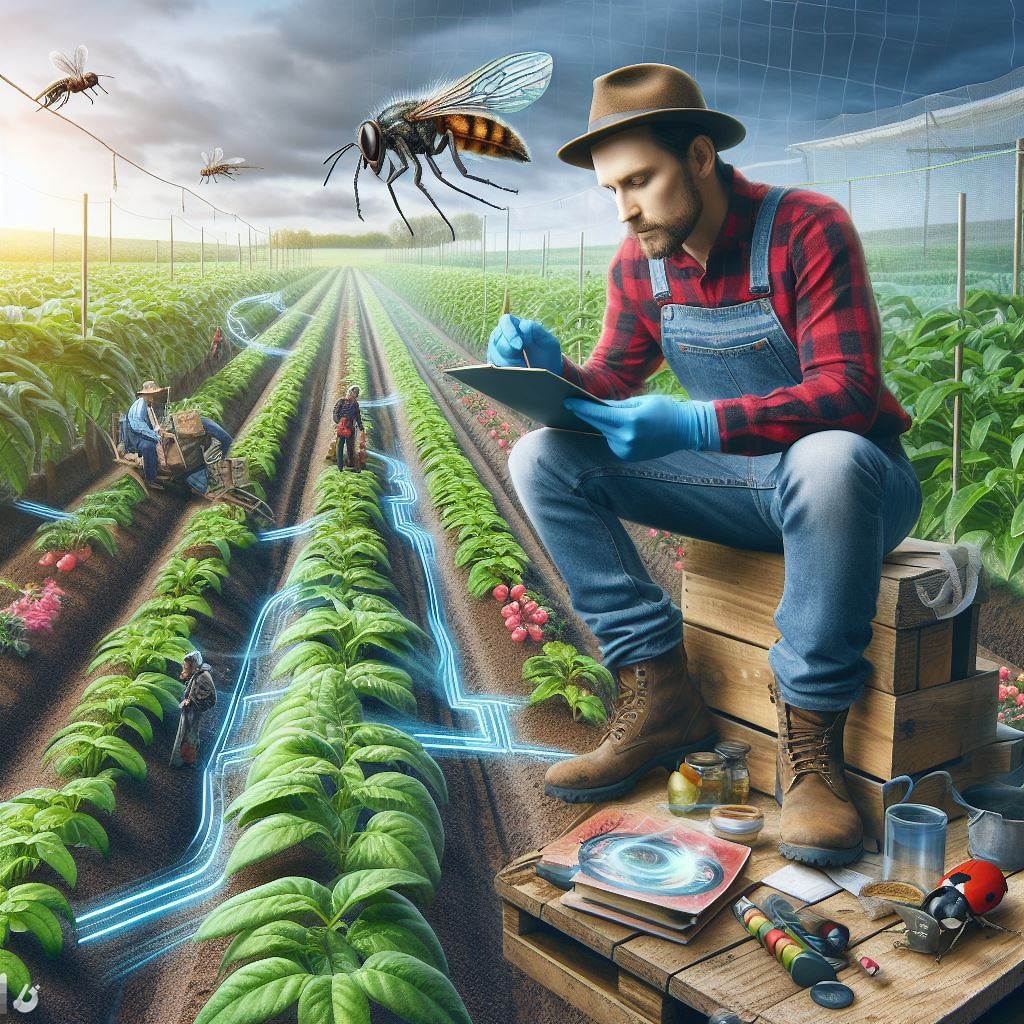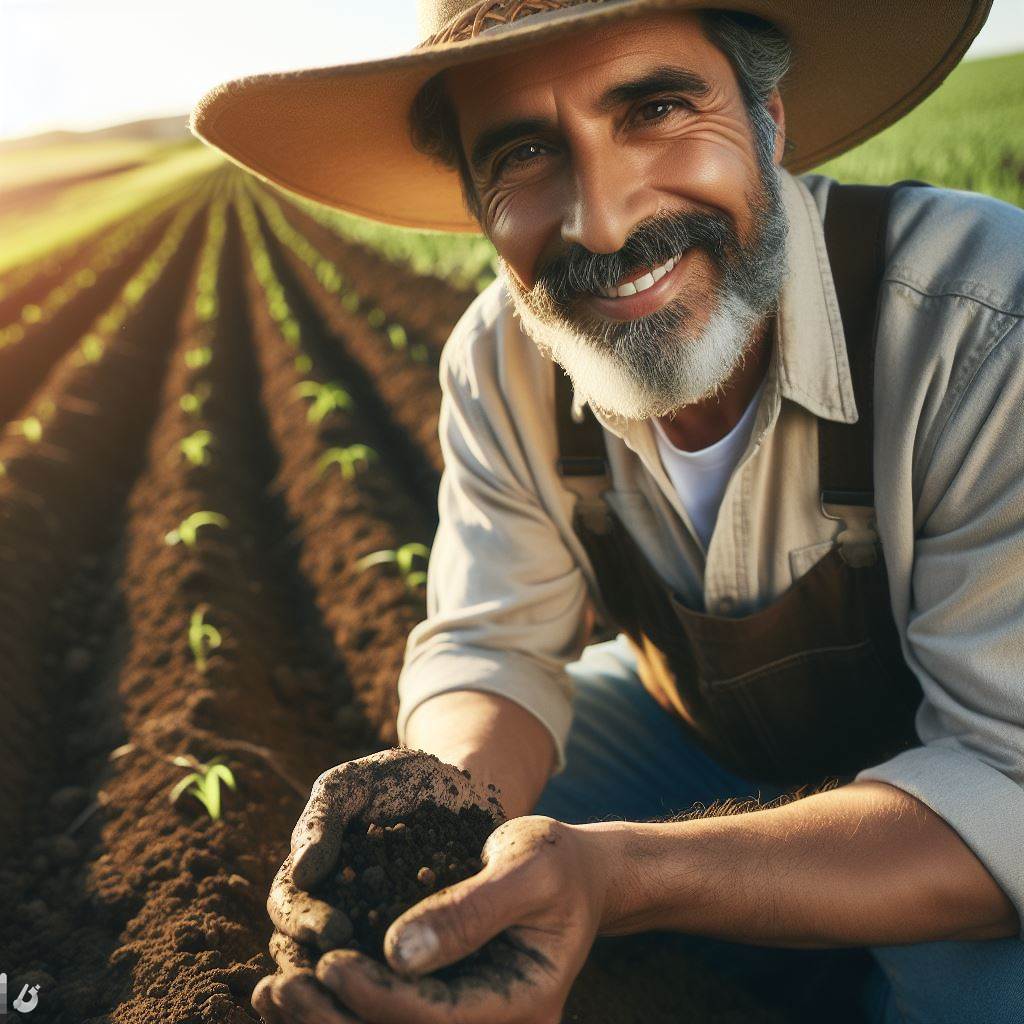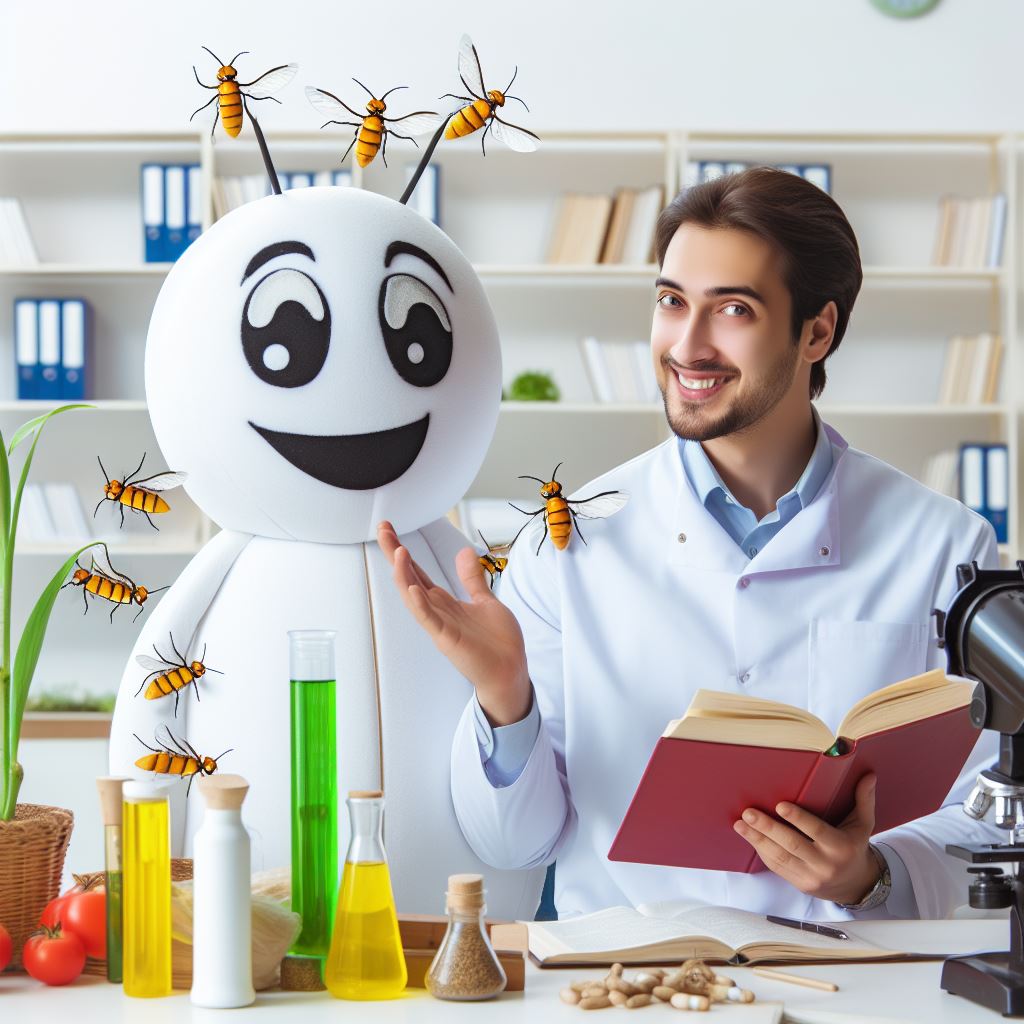Introduction
IPM, or Integrated Pest Management, is a holistic approach to pest control in eco-farming.
It focuses on minimizing pesticide use and promoting natural pest control methods.
Implementing IPM practices is essential for sustainable and environmentally-friendly farming.
This blog post aims to provide farmers with a comprehensive guide to successfully implementing IPM practices in eco-farming.
By following the strategies outlined in this guide, farmers can effectively manage pests while minimizing harm to the environment and human health.
Welcome to “IPM: A Farmer’s Guide to Eco-Farming,” where the synergy of Integrated Pest Management (IPM) practices and sustainable agriculture unfolds.
This comprehensive guide delves into the intricacies of balancing ecological principles with farming needs, empowering farmers with effective strategies for harmonious coexistence with nature.
From minimizing pesticide usage to harnessing natural predators, discover a roadmap that not only safeguards crops but also fosters environmental resilience.
Join us on a journey towards eco-friendly farming, where innovation meets conservation, and farmers play a pivotal role in cultivating a healthier, more sustainable future.
Read: The Role of Biocontrol in IPM Practices
Understanding IPM
IPM principles
Integrated Pest Management (IPM) is an eco-friendly approach to farming that emphasizes sustainable and efficient pest control practices.
Key components of IPM
Pest identification and monitoring
Farmers need to accurately identify pests and monitor their population levels to determine the severity of infestation.
Prevention and cultural practices
IPM involves implementing preventive measures such as crop rotation, proper irrigation, and maintaining healthy soil, which reduce pest attraction and enable plants to resist attacks.
Biological control methods
Biocontrol methods utilize natural enemies of pests, such as predators, parasites, or pathogens, to control their populations and maintain ecological balance on the farm.
The judicious use of pesticides
While pesticides may be necessary in some cases, IPM focuses on minimizing their use and instead promotes the targeted and selective application of pesticides to reduce environmental impact.
Transform Your Agribusiness
Unlock your farm's potential with expert advice tailored to your needs. Get actionable steps that drive real results.
Get StartedBenefits of IPM over conventional farming methods
Reduced pesticide dependence
By incorporating multiple pest control strategies, IPM reduces the need for excessive pesticide use, leading to decreased chemical inputs and less harm to beneficial insects and the environment.
Lower environmental impact
IPM practices help preserve biodiversity, protect water sources, and prevent soil degradation, leading to a healthier and more sustainable farming system.
Cost-effectiveness
Implementing IPM techniques can reduce production costs as farmers spend less on pesticides and minimize crop losses caused by pests.
Enhanced food safety
IPM prioritizes the use of pest control methods that are less toxic to humans, reducing pesticide residues on crops and enhancing food safety.
Long-term sustainability
IPM fosters a balanced ecosystem, offering long-term benefits by preserving natural resources, promoting biodiversity, and supporting ecological resilience.
In short, understanding IPM is crucial for farmers who want to adopt sustainable and eco-friendly farming practices.
By following the principles of pest identification and monitoring, prevention and cultural practices, biological control methods, and the judicious use of pesticides, farmers can reap numerous benefits.
IPM helps reduce pesticide dependence, lowers environmental impact, provides cost-effectiveness, enhances food safety, and contributes to long-term sustainability.
Embracing IPM not only supports the health of our planet but also ensures the well-being of both farmers and consumers.
Read: Sustainable Farming: IPM Success Stories
Implementing IPM in Eco-Farming
Conducting pest surveys and monitoring
Before implementing IPM practices, farmers need to conduct pest surveys and monitor the population levels of pests in their region.
This step is crucial in understanding the specific challenges they face and developing effective control strategies.
Prevention and cultural practices
Prevention and cultural practices play a significant role in IPM implementation.
Crop rotation helps disrupt pest life cycles and reduces pest buildup, while diversification minimizes the risk of large-scale pest outbreaks.
Proper soil management, such as maintaining organic matter and optimal soil fertility, promotes natural pest resistance.
Mechanical pest control methods, such as handpicking pests or using traps, can also be employed.
Biological control methods
Biological control methods are essential components of IPM. Introducing beneficial insects, such as ladybugs or parasitic wasps, can help control pest populations naturally.
These insects prey on harmful pests, acting as natural predators. Additionally, microbial pesticides, derived from bacteria or fungi, can provide effective pest control without harming the environment.
The judicious use of pesticides in IPM
While pesticides should be used as a last resort in IPM, their judicious use is sometimes necessary.
Farmers should prioritize selecting the least toxic pesticides available, ensuring minimal harm to the environment and non-target organisms.
Proper application techniques, including adjusting dosage and timing, prevent excessive pesticide use.
Regular monitoring and assessment of pesticide effectiveness ensure adjustments can be made if necessary.
Implementing IPM in eco-farming requires a comprehensive approach involving pest surveys, prevention, biological control methods, and the careful use of pesticides.
By combining these strategies, farmers can manage pest populations effectively while minimizing environmental impacts.
Showcase Your Farming Business
Publish your professional farming services profile on our blog for a one-time fee of $200 and reach a dedicated audience of farmers and agribusiness owners.
Publish Your ProfileRead: IPM Strategies: Safe for Environment

Challenges and Solutions in IPM Implementation
Implementing Integrated Pest Management (IPM) can be challenging for farmers due to various factors that need to be addressed.
In this section, we will discuss some of the common challenges faced in IPM implementation and explore potential solutions.
Lack of knowledge and awareness among farmers
Many farmers lack the necessary knowledge and awareness about IPM principles, which can hinder its successful implementation.
To address this issue:
- Educating farmers on IPM principles: Providing comprehensive training programs, workshops, and seminars to educate farmers about the importance and benefits of IPM. This can enhance their understanding and encourage active participation.
- Collaborating with agricultural extension programs: Partnering with agricultural extension programs can facilitate the dissemination of IPM information to a wider audience. Extension agents can work closely with farmers, providing on-the-ground support and guidance in implementing IPM practices.
Economic considerations and cost-effectiveness
Implementing IPM may require additional investments and resources, which can be a deterrent for some farmers. To overcome this challenge:
- Analyzing long-term benefits of IPM: Conducting cost-benefit analyses to highlight the long-term advantages of IPM implementation, such as reduced pesticide costs, enhanced crop productivity, and improved environmental sustainability. This can help farmers make informed decisions based on the potential economic gains.
- Financial assistance programs for eco-farmers: Governments and non-governmental organizations can offer financial assistance, grants, and subsidies specifically targeted towards supporting eco-farmers adopting IPM practices. These programs can alleviate the initial burden of implementing IPM and encourage wider adoption.
Overcoming resistance from conventional farming practices
Conventional farming practices are deeply ingrained and often resistant to change. To address this challenge:
- Peer support and networking among eco-farmers: Establishing platforms for eco-farmers to share their experiences, challenges, and success stories can foster a sense of community and support. Peer-to-peer interactions allow for the exchange of knowledge, practical tips, and emotional encouragement to overcome resistance.
- Demonstration farms showcasing IPM success stories: Creating demonstration farms that showcase the positive outcomes of IPM implementation can be a persuasive tool. Eco-farmers can visit these farms, witness the benefits firsthand, and gain confidence in adopting IPM practices.
In fact, implementing IPM faces various challenges, but with the right strategies and support systems in place, these hurdles can be overcome.
Educating farmers, addressing economic concerns, and fostering a supportive network are essential for successful IPM implementation on a larger scale.
By embracing IPM practices, farmers can benefit from sustainable agriculture, better crop yields, reduced chemical inputs, and improved environmental health.
Read: Understanding IPM in Sustainable Farming
Conclusion
Implementing Integrated Pest Management (IPM) principles in eco-farming involves using a combination of strategies to manage pests effectively.
These strategies include monitoring and identifying pests, setting action thresholds, implementing preventive measures, and using biological control methods.
Implementing IPM is crucial for sustainable agriculture as it reduces the reliance on synthetic pesticides, minimizes environmental pollution, protects beneficial insects, and promotes biodiversity.
It also helps in preserving soil health and ensures the long-term viability of farming systems.
Farmers are strongly encouraged to adopt IPM practices as they offer numerous benefits.
By implementing IPM, farmers can reduce the negative impacts of pests, lower production costs by reducing pesticide use, and maintain the quality and safety of their agricultural products.
The future of eco-farming lies in the wider adoption and integration of IPM practices.
As consumers increasingly demand sustainably produced food, implementing IPM can help farmers meet this demand while preserving the environment and ensuring the health of future generations.
Therefore, embracing IPM in eco-farming is essential for a sustainable and prosperous agricultural industry.
In summary, IPM is a valuable framework for eco-farming that prioritizes the use of environmentally friendly pest management strategies.
IPM principles, farmers can achieve sustainable agriculture, protect the environment, and meet the growing demand for healthy and responsibly produced food.
It is crucial for farmers to embrace IPM practices and work towards a future of eco-farming that prioritizes the well-being of both people and the planet.




